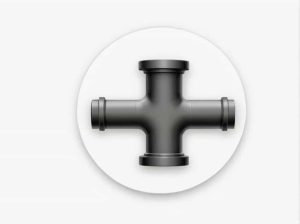Propellant tanks play a crucial role in space and aerospace applications ensuring a stable and controlled flow of fuel to engines. One of the key challenges in propulsion systems is maintaining proper tank pressurization which directly affects performance safety and efficiency.
This topic explores the modeling of propellant tank pressurization including the governing principles pressurization techniques and computational methods used to predict tank behavior under various conditions.
Understanding Propellant Tank Pressurization
What Is Propellant Tank Pressurization?
Propellant tank pressurization is the process of maintaining sufficient internal pressure to ensure smooth fuel flow and structural integrity. This is critical for:
- Preventing tank collapse due to external pressure.
- Ensuring steady fuel delivery to the engine.
- Reducing cavitation risks in liquid propulsion systems.
Pressurization is achieved by introducing inert gases self-pressurizing propellants or mechanical systems that maintain optimal pressure levels.
Why Is Pressurization Modeling Important?
Modeling the pressurization system helps engineers:
- Predict pressure variations during operation.
- Optimize gas injection rates for efficiency.
- Ensure structural integrity under dynamic conditions.
- Improve safety margins by identifying potential failure points.
Key Components of Propellant Tank Pressurization
1. Pressurizing Gas System
- Inert gases (e.g. helium nitrogen) are commonly used to pressurize tanks.
- The gas is stored in high-pressure vessels and injected into the tank as needed.
2. Tank Structure and Materials
- Propellant tanks must withstand internal and external pressure changes.
- Common materials include aluminum alloys stainless steel and composite materials.
3. Propellant Behavior Under Pressure
- Cryogenic propellants (e.g. liquid hydrogen liquid oxygen) require special insulation to prevent heat transfer.
- Hypergolic propellants (e.g. hydrazine) require controlled pressurization to prevent over-pressurization hazards.
Methods of Propellant Tank Pressurization
1. Blowdown Pressurization
- A simple system where pressurizing gas is introduced at the start and depletes over time.
- Used in small-scale or short-duration missions.
- Advantages: Simple and lightweight.
- Disadvantages: Pressure decreases as fuel is consumed.
2. Regulated Pressurization
- A regulator valve controls gas flow to maintain constant pressure.
- Used in long-duration missions and large propulsion systems.
- Advantages: Consistent tank pressure throughout the mission.
- Disadvantages: More complex and heavier due to additional components.
3. Self-Pressurizing Propellants
- Certain propellants (e.g. liquid oxygen liquid methane) vaporize naturally to maintain pressure.
- Advantages: Reduces the need for external gas sources.
- Disadvantages: Requires thermal management systems to control boil-off.
4. Active Pumped Pressurization
- Pumps actively regulate propellant flow and pressure.
- Common in large rockets and space launch systems.
- Advantages: Enables high-pressure fuel delivery without excessive gas usage.
- Disadvantages: Complex and requires power.
Mathematical Modeling of Tank Pressurization
1. Governing Equations
Modeling pressurization requires solving:
- Mass conservation equations for gas and liquid phases.
- Energy balance equations to account for temperature changes.
- Momentum equations to study propellant flow dynamics.
2. Computational Fluid Dynamics (CFD) Simulation
CFD tools are used to model gas injection thermal effects and phase changes inside the tank.
- Finite Volume Method (FVM) – Used for simulating pressure distribution.
- Navier-Stokes Equations – Solve fluid motion in complex geometries.
- Multiphase Flow Models – Predict liquid-gas interactions.
3. Thermodynamic Considerations
- Isothermal vs. Adiabatic Pressurization: Determines heat exchange effects.
- Real Gas Behavior: High-pressure gases do not always follow ideal gas laws.
- Cryogenic Effects: Requires modeling of boil-off and phase transition dynamics.
Challenges in Propellant Tank Pressurization
1. Pressure Instability
- Rapid gas injection can cause pressure fluctuations leading to fuel delivery inconsistencies.
2. Thermal Management Issues
- Cryogenic tanks require insulation to prevent excessive heat transfer and fuel loss.
- Gas condensation can alter pressurization efficiency.
3. Structural Integrity Risks
- Over-pressurization may damage tank walls or cause catastrophic failure.
- Under-pressurization may lead to tank collapse due to external forces.
4. Weight and Space Constraints
- Pressurization systems must be lightweight yet robust for space applications.
- Large storage tanks for pressurizing gases add mass penalties to spacecraft.
Applications of Propellant Tank Pressurization
1. Rocket and Spacecraft Propulsion
- Used in launch vehicles (Falcon 9 SLS Ariane 6).
- Essential for deep-space missions to maintain long-term fuel stability.
2. Satellites and Space Stations
- Pressurization ensures steady thruster operation for orbital adjustments.
- Used in International Space Station (ISS) resupply missions.
3. Aircraft and UAV Fuel Systems
- Military and commercial aircraft use pressurization to maintain fuel stability at high altitudes.
- Unmanned Aerial Vehicles (UAVs) require lightweight pressurization methods.
Future Developments in Tank Pressurization
1. Smart Pressurization Systems
- AI and machine learning for adaptive pressurization control.
- Real-time sensors for leak detection and failure prevention.
2. Advanced Materials and Lightweight Designs
- Graphene-based composites for stronger lighter tanks.
- 3D-printed tank structures for customized fuel storage solutions.
3. Sustainable Propulsion Technologies
- Hydrogen-based pressurization for eco-friendly propulsion.
- Integration with electric and hybrid propulsion systems.
Modeling propellant tank pressurization is critical for the safe and efficient operation of aerospace propulsion systems. By leveraging advanced mathematical models CFD simulations and thermodynamic principles engineers can optimize fuel flow stability and safety in space missions and aviation.
As technology advances smarter pressurization systems innovative materials and eco-friendly solutions will shape the future of aerospace engineering ensuring more efficient and reliable propulsion systems.



